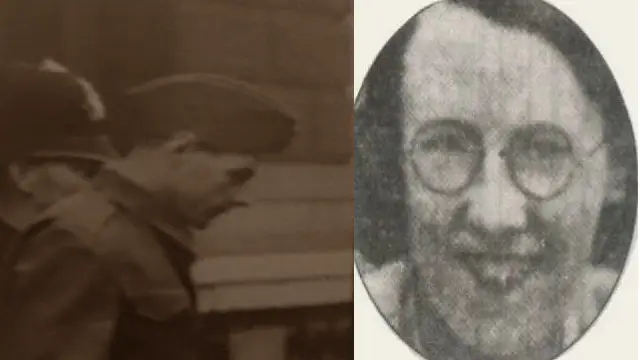In November 1940, a tragic crime shocked the community of Waterloo, England. Fifteen-year-old Mary Hagan was raped and murdered, leaving behind a vital clue: a bandage used by her attacker. This case would unfold with twists and turns, leading to the capture of a soldier.
The Disappearance of Mary Hagan
On the evening of November 2, 1940, Mary Hagan left her home on Brookside Avenue. She went out to buy a newspaper and cigarettes for her father but never returned. Her family quickly grew worried and organized search parties to find her.
That same night, Mary’s body was discovered in a concrete blockhouse, which had been used as an anti-invasion fortress during World War II. The scene was grim. Nearby, investigators found a clear boot heel impression, an army bandage stained with zinc ointment, and a chocolate bar wrapper that also contained traces of the same ointment. It was determined that Mary had eaten the chocolate bar, indicating that the person who wore the bandage had come into contact with her.
The Investigation Begins
The police realized that if they could find the soldier who wore the bandage, they would likely find Mary’s killer. Thousands of troops were stationed in the North West at the time, making the search challenging.
A waitress came forward with a crucial piece of information. She reported that a soldier with a cut on his face had asked to clean up in her house, claiming he had been in a fight. This soldier’s description matched that of a man involved in a robbery a month earlier. In that incident, a cyclist named Anne McVittie had been robbed by a soldier on a canal bank just a mile from where Mary was killed.
The Arrest of Samuel Morgan
Seventeen days after Mary’s murder, police in London picked up a soldier named Samuel Morgan. He was found huddled in a shop doorway. Morgan had a healed scar on his thumb, which caught the attention of detectives from Bootle, who were investigating the robbery involving Anne.
When police searched Morgan’s home on Berkeley Drive in Seaforth, they found a bandage that matched the one from the murder scene. Soil samples from his uniform also matched the ground near where Mary’s body was found. Witnesses identified Morgan as having been seen near the crime scene, and the landlord of the Royal Hotel reported that he had been in the pub that night, wearing a bloodstained cap.
The Trial
Faced with overwhelming evidence, Morgan confessed to robbing Mary of cigarettes and money. He admitted to dragging her into the blockhouse but claimed that someone else must have committed the rape and murder. The Director of Public Prosecutions ordered that he be charged with murder, while the robbery and rape charges would remain in case he was found not guilty.
During the trial, the jury found Morgan’s explanation implausible. They believed it was unlikely that another man appeared after he left the scene. After a brief deliberation, the jury found him guilty of murder.
The Sentence
Samuel Morgan was sentenced to death. He was hanged on April 4, 1941. Throughout the trial, he never confessed to the full extent of his crime, leaving many questions unanswered. The case of Mary Hagan remains a haunting reminder of the violence that can occur in society.
The Impact of the Case
The murder of Mary Hagan shocked the local community and highlighted the dangers faced by young women during that time. It also raised awareness about the need for better protection and support for victims of violence.
The investigation into Mary’s murder showcased the determination of law enforcement to seek justice. The evidence collected, including the bandage and soil samples, played a crucial role in solving the case. It demonstrated how even small clues can lead to significant breakthroughs in criminal investigations.
Conclusion
The tragic story of Mary Hagan and the subsequent arrest of Samuel Morgan serves as a reminder of the dark side of human nature. While justice was served in this case, it also reflects the ongoing issues of violence and crime in society.
As we remember Mary Hagan, we must also acknowledge the importance of community vigilance and support for those affected by violence. Her story is a call to action for all of us to work towards a safer world for everyone.

